The Vital Signs: Developing insights for core muscle injuries
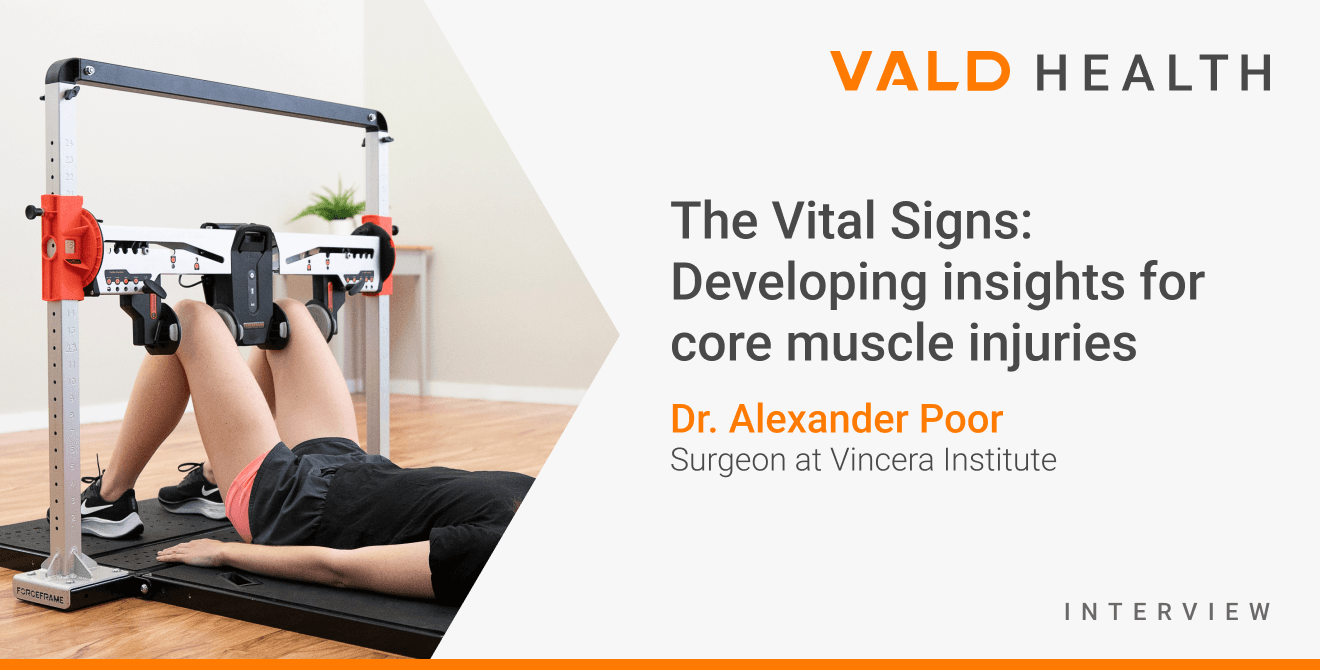
Dr. Alexander Poor is a surgeon specializing in the treatment of core muscle injuries. His partner and mentor, Dr. William C. Meyers, founded the Vincera Institute in Philadelphia, U.S.A. - the world's first and only premier center dedicated to the core.
Could you provide an overview of the Vincera Institute and types of patients you manage?
The Vincera Institute boasts an imaging center, physician clinic, surgery center, and physical therapy clinic dedicated to the diagnosis and treatment of core muscle injuries all under one roof.
One of the really fun parts of working here is the cross-pollination between specialists. We meet regularly to exchange ideas and discuss tricky patients. Some of the best ideas and discussions have arisen from ‘water cooler’ conversations.
We treat about 50% professional and collegiate athletes, 25% high school and competitive athletes, and 25% recreational athletes or folks with physical jobs. The forces that can give rise to core injuries don’t only happen during sport, and part of the bias towards high-level athletes is that those people are more likely to come across someone who recognizes their injury and what to do about it.
When did you implement VALD technology and why?
We implemented VALD’s ForceFrame in January 2022 and use it predominantly to test hip abduction and adduction strength.
A lot of the existing literature surrounding core muscle injuries suggests that hip adductor weakness and an imbalance between the opposing lateral plane muscle groups of the hip (adductors and abductors) increase the risk of injury.
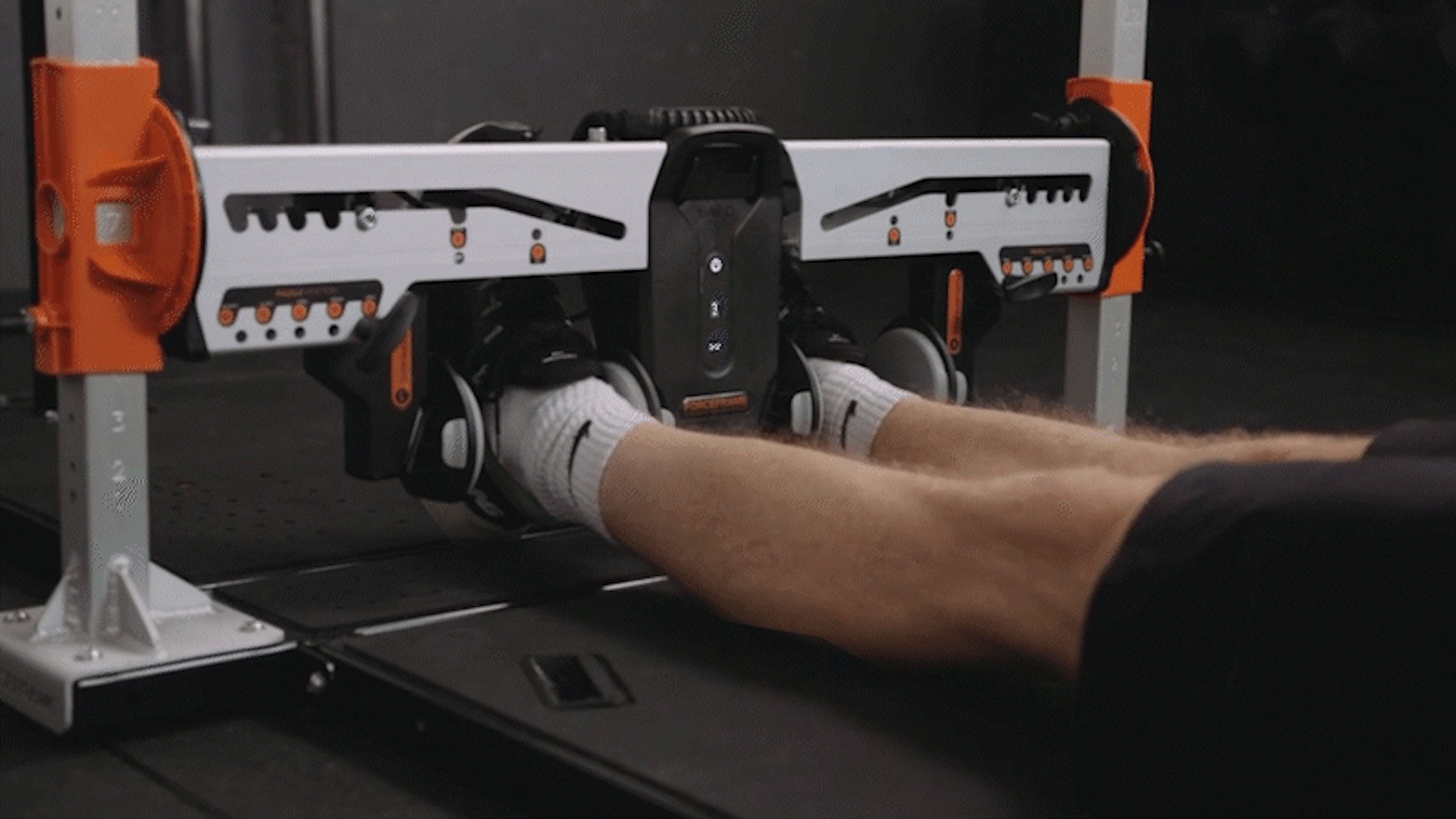
An example of supine, long lever abduction isometric strength test on ForceFrame.
I realized that we needed to be precisely tracking these metrics in our patients in order to:
- Leverage literature on the impacts of muscle strength and imbalance on core muscle injuries, and build upon that literature ourselves; and
- apply those insights to questions like when an athlete is ready to return to play or whether an athlete might be able to delay definitive surgical repair.
How do you use VALD technology in clinical practice?
VALD’s ForceFrame allows us to use hip adduction and abduction strength (at zero and 60 degrees hip flexion) as a “vital sign.”
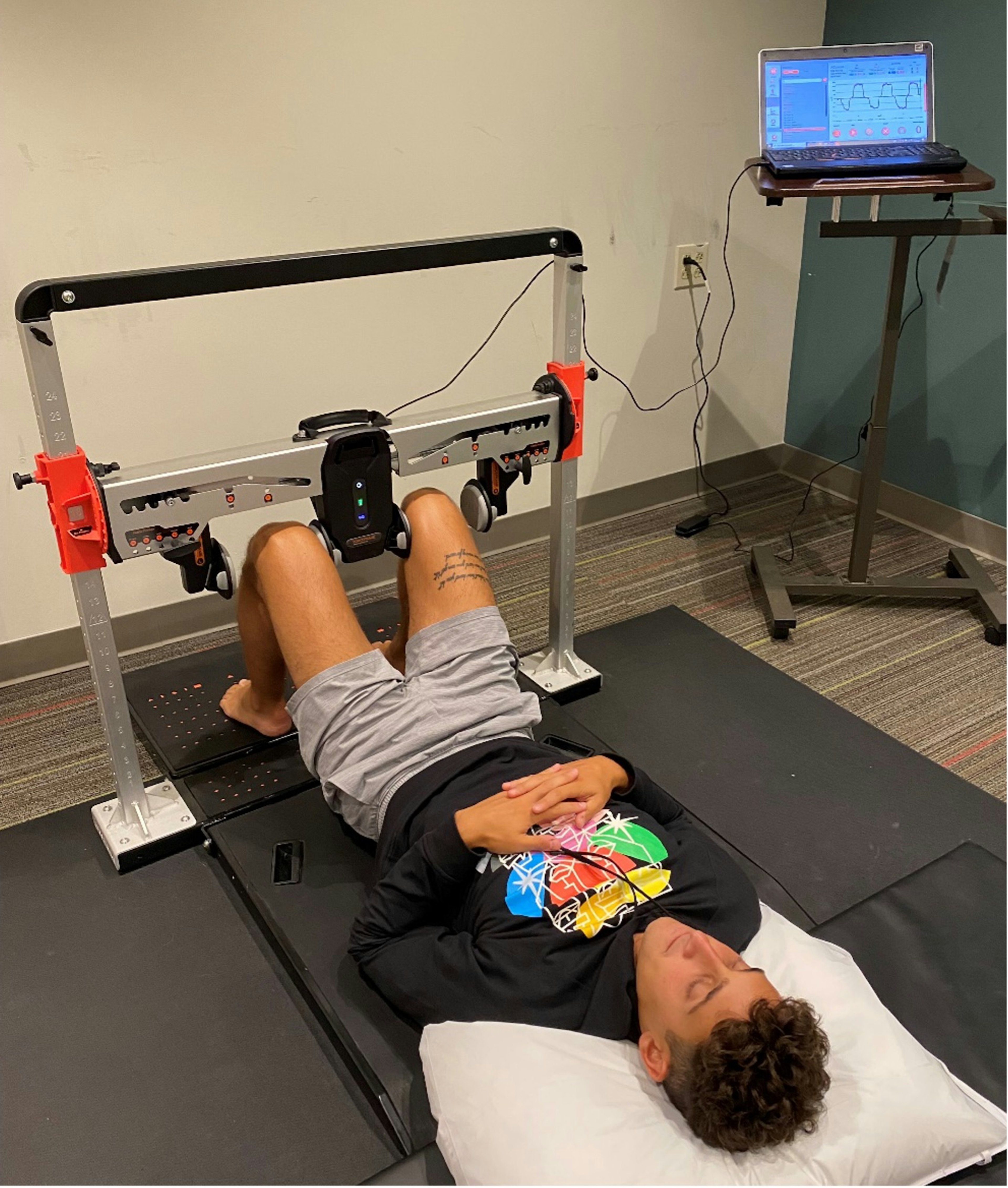
ForceFrame allows us to use hip adduction and abduction strength (at zero and 60 degrees) as a “vital sign.”
We gather these data on every patient we see in the clinic. Typically, Clark Bingol, Regan or Leigh Waters (our athletic trainers) will bring a patient back from the waiting room into our biomechanics lab to measure height, weight, ForceFrame data, pulse, and blood pressure. This can be done in a matter of minutes, after which they are taken to one of the exam rooms to see the surgeon.
Our athletic trainers will bring a patient back from the waiting room into our biomechanics lab to measure height, weight, ForceFrame data, pulse, and blood pressure. This can be done in a matter of minutes.
We follow our patients quite closely after surgery, typically seeing them the day after surgery, 1 week post-op, 3 weeks post-op, and then again at 6 weeks post-op. Many of our patients fly in from afar to have surgery, so we often will not see them in person after the first day following surgery. We take advantage of telemedicine in those cases. 95% of our patients are back to their pre-injury activities at around 6 weeks after surgery, but we follow everyone until they are back to 100%.
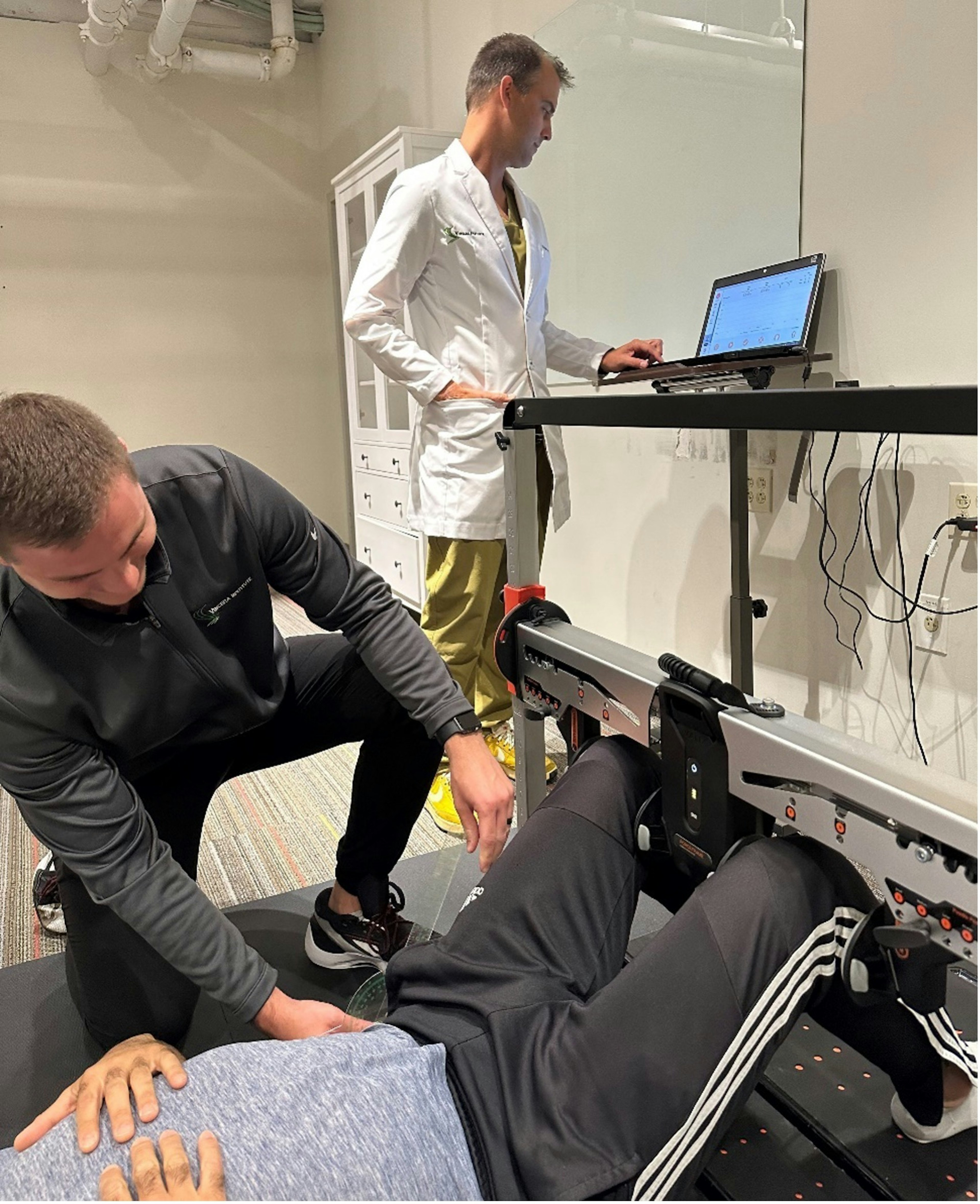
What impact has VALD technology had on your clinical practice?
VALD’s ForceFrame provides a treasure trove of data that Clark Bingol (athletic trainer) and I enter into a database and use for both immediate actions and future publications. With respect to patient care, it has allowed us to establish a normal range for muscle strength at the various stages in recovery. This helps me identify folks who might not be getting optimal physical therapy, who might be at risk for a set-back, and help troubleshoot why people might not feel like they are progressing as expected.
Specifically, what are the common tests you do and what metrics are you examining?
We measure hip adduction and abduction at zero degrees of hip flexion (supine) and at 60 degrees of hip flexion. In particular, the zero-degree adduction test can be difficult for patients and, at times, painful. That makes it a great test for uncovering subtler differences between patients. Many of them are so strong and in such great shape that we had to come up with challenges that allow us to see the small differences at the end of the bell curve.
Many of the patients are so strong and in such great shape, that we had to come up with challenges that allow us to see the small differences at the end of the bell curve.
Do you review the test results regularly?
I use VALD Hub every clinic day to generate graphs to show my patients their progress. I love the ability to select which data points to include. We have hundreds of anonymized patients’ data stored in VALD Hub and it’s great to have it so readily accessible.
I use VALD Hub every clinic day to generate graphs to show my patients their progress. I love the ability to select which data points to include.
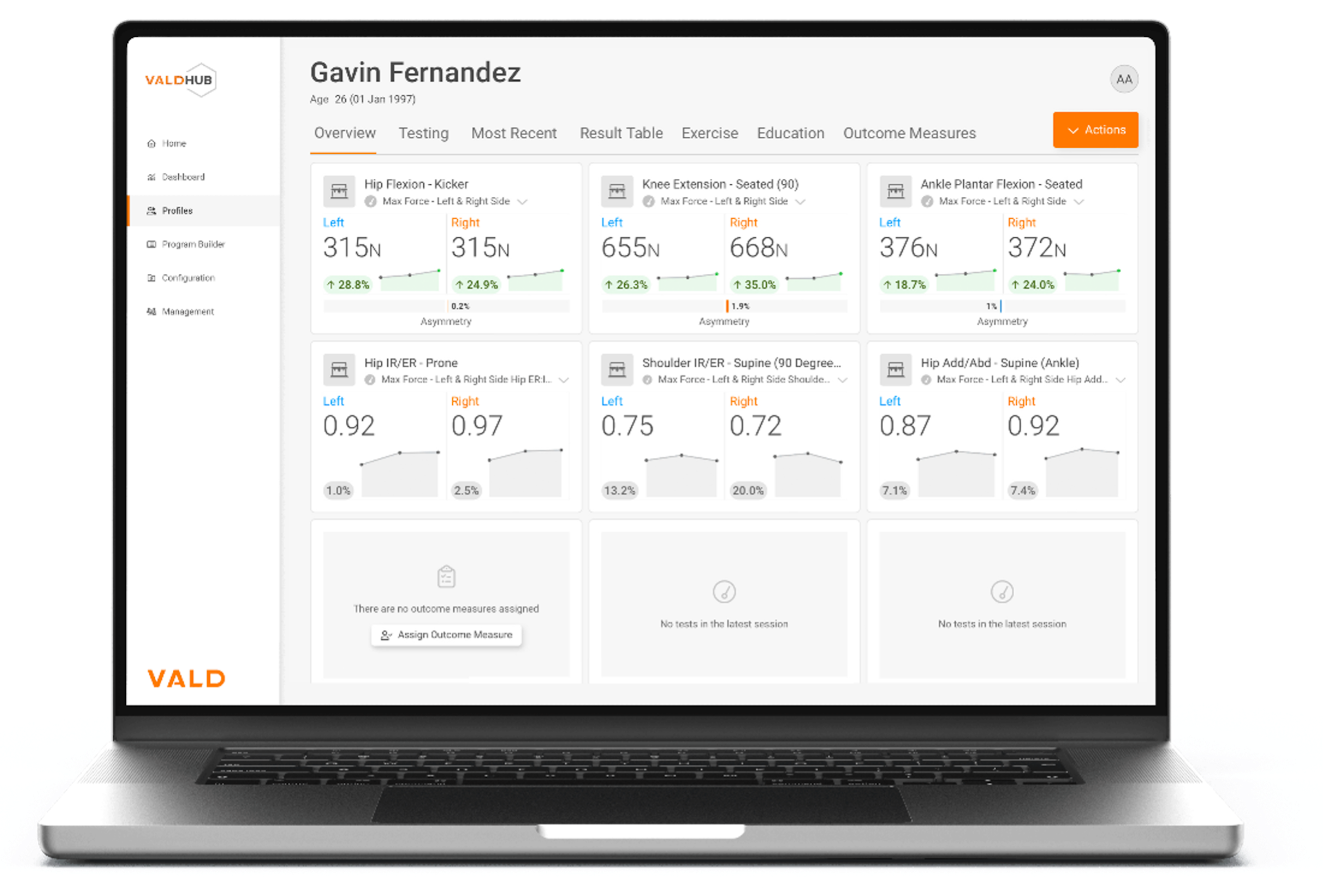
With regards to return to sport/play – what criteria are you using to inform your decision?
A lot of our patients present having tried to return to play but were unable to do so because of pain and/or weakness. I want my patients stronger than they were prior to surgery before returning to full training. That inflection point is often 3-4 weeks after surgery. In cases where it takes longer to reach that point, it will prompt us to look more closely into why.
With the data we are collecting we are hoping to soon have some clearer “thresholds” (when normalized by weight and height) that predict delayed or fast track recoveries. These thresholds may even be able to be indicators of increased failure rate.
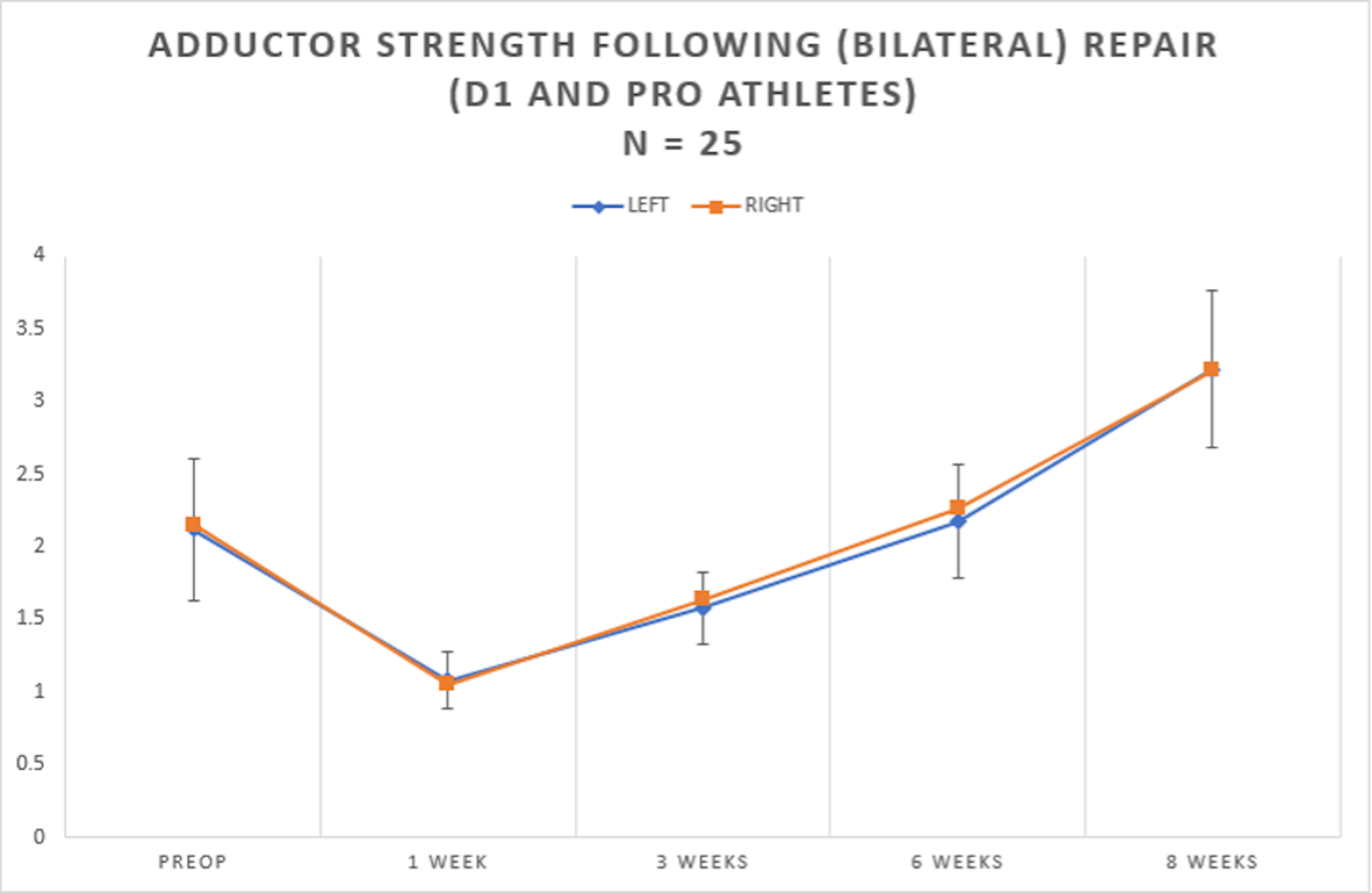
What impact has VALD technology had on patients?
Our athletes, for the most part, love more knowledge. The graphs of their progress have been a useful motivator. In addition, it is really encouraging when they hop on the ForceFrame and are able to crank out maximum effort long-lever adduction without pain.
Our athletes, for the most part, love more knowledge ... it is really encouraging when they hop on the ForceFrame and are able to crank out maximum effort long-lever adduction without pain.
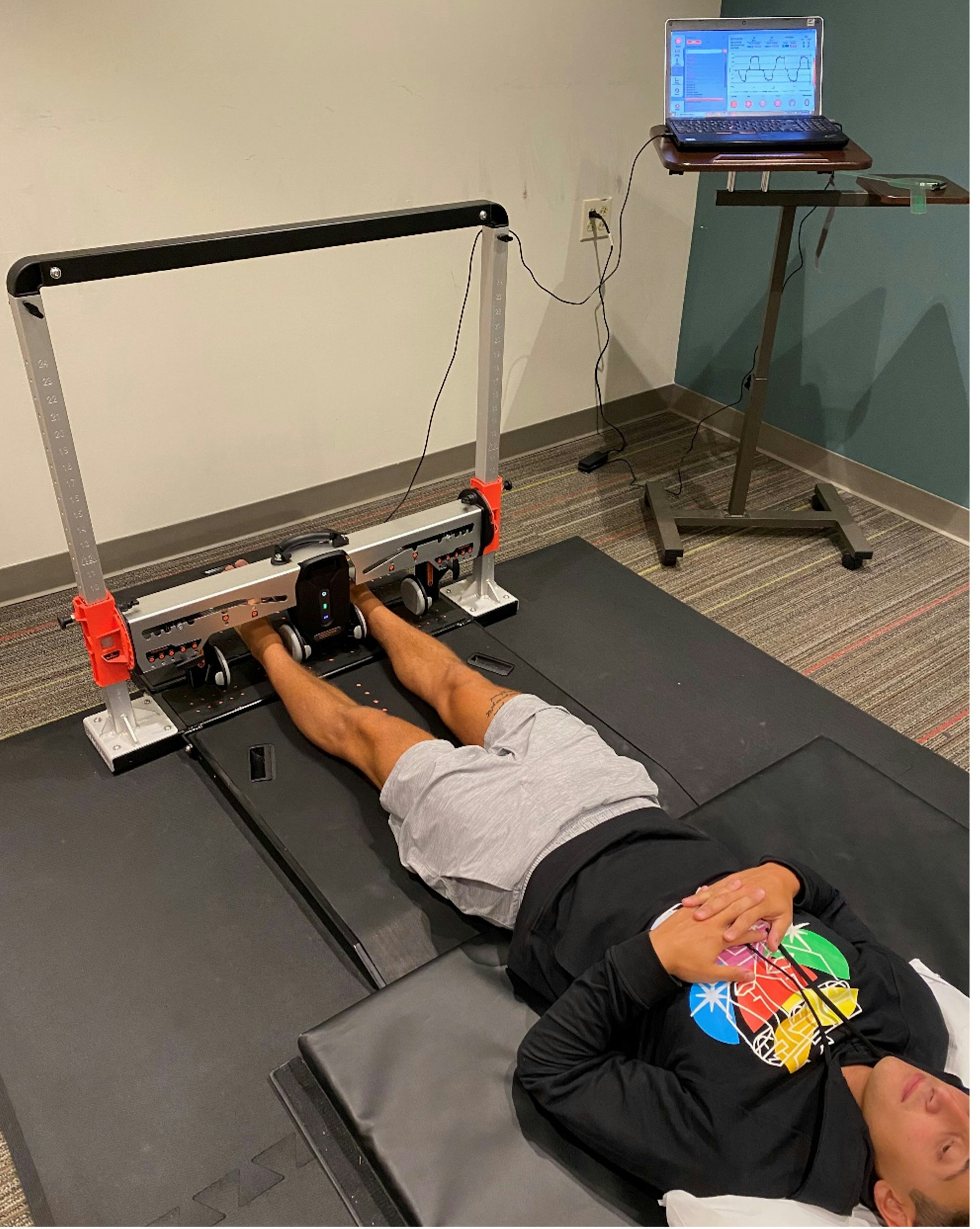
If you were chatting to another surgeon, how would you describe the benefits of VALD technology?
The primary motivator for me was the realization that we treat more patients with core muscle injuries than anyone, and yet we had no reliable way of tracking their strength and asymmetries.
The primary motivator for me was the realization that we treat more patients with core muscle injuries than anyone, and yet we had no reliable way of tracking their strength and asymmetries.
We are trying to force core injuries into the mainstream of sports medicine (to join the ranks of ACL tears, UCL tears, etc.). In order to accomplish that goal, we need to be gathering, analyzing and publishing as much objective data as we can. VALD’s ForceFrame is a big part of that process for us currently.
Do you have any advice for healthcare professionals on how to best reduce the likelihood of a hip and groin injuries in their athletes/patients?
For those tracking hip adductor and abductor strength, athletes with a drop-off beyond expected during a season should be scrutinized for a potential injury and should probably have their load and training regimen modified until they recover.
Athletes with a strength drop-off beyond expected during a season should be scrutinized for a potential injury.
Early recognition of at-risk athletes and of those with injuries is the best way to cut down on lost playing time.
Do you have any examples of where the data from VALD technology has had an impact on your clinical decisions?
A collegiate basketball player was trying to continue to play after picking up a core muscle injury mid-season. In initial testing, we determined he was profoundly weak in long-lever hip adduction.
After injecting corticosteroid around the pubic bone attachments of the rectus abdominis and adductors, we re-tested him immediately (while the local anesthetic was still in effect) and after a week of focused core physical therapy exercises.
His strength was back to his preseason levels, which allowed all of us to confidently return him to the starting lineup. He ended up doing well and had surgery at the end of the season.
Easily configured into a wide range of standardized positions, ForceFrame enables you to set a position for almost any test or exercise.
If you would like to know more about how to integrate VALD’s human measurement technology into your organization to help with the engagement of your clients, please reach out here.
